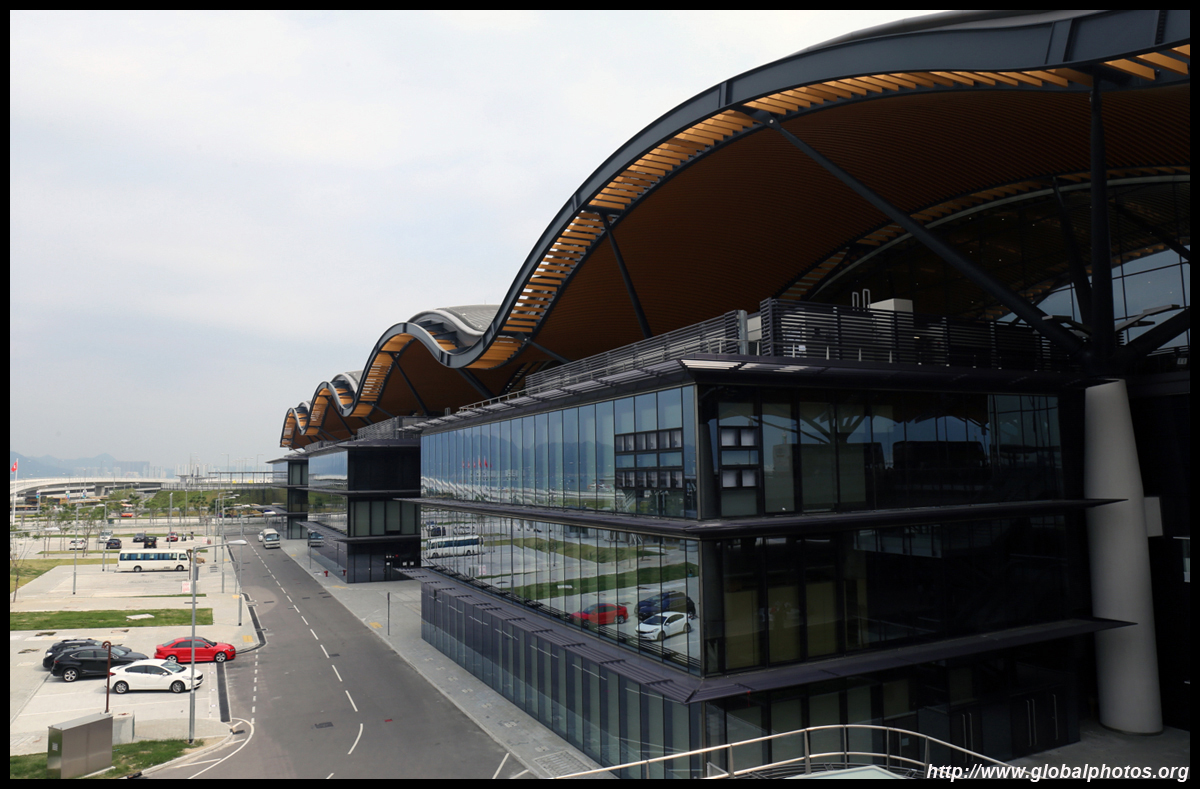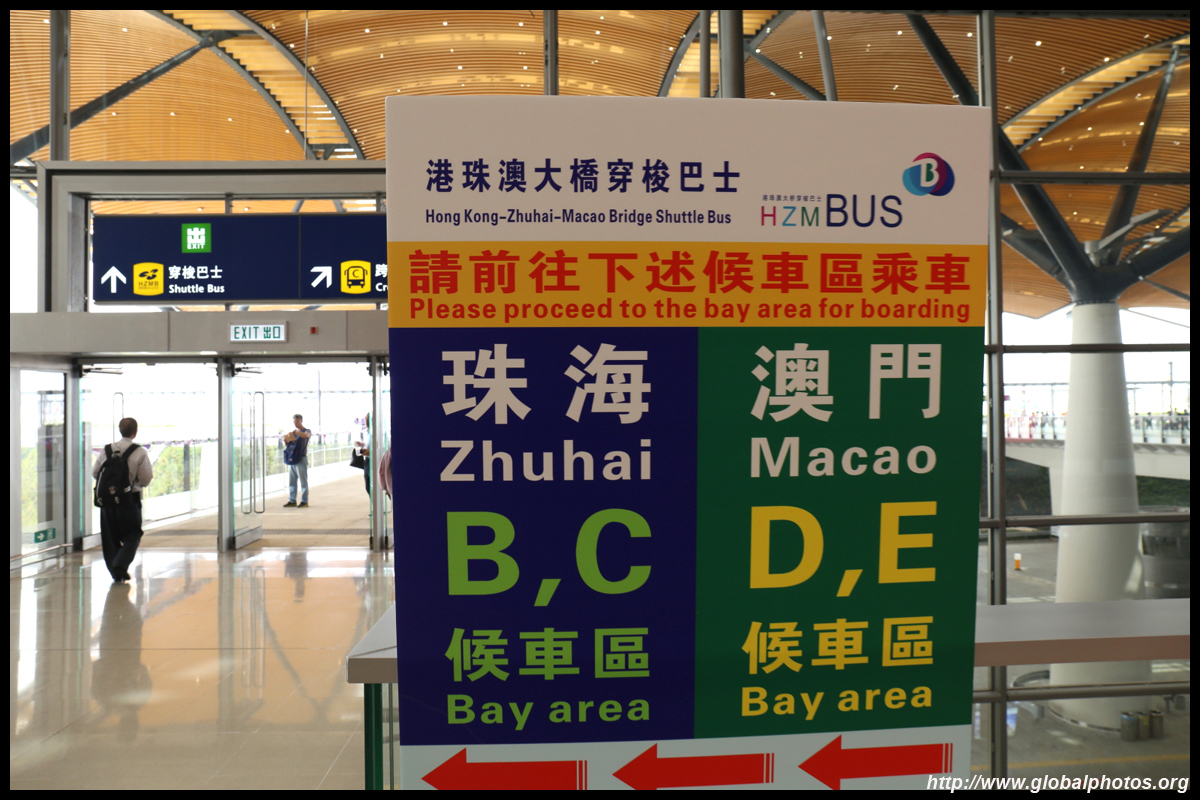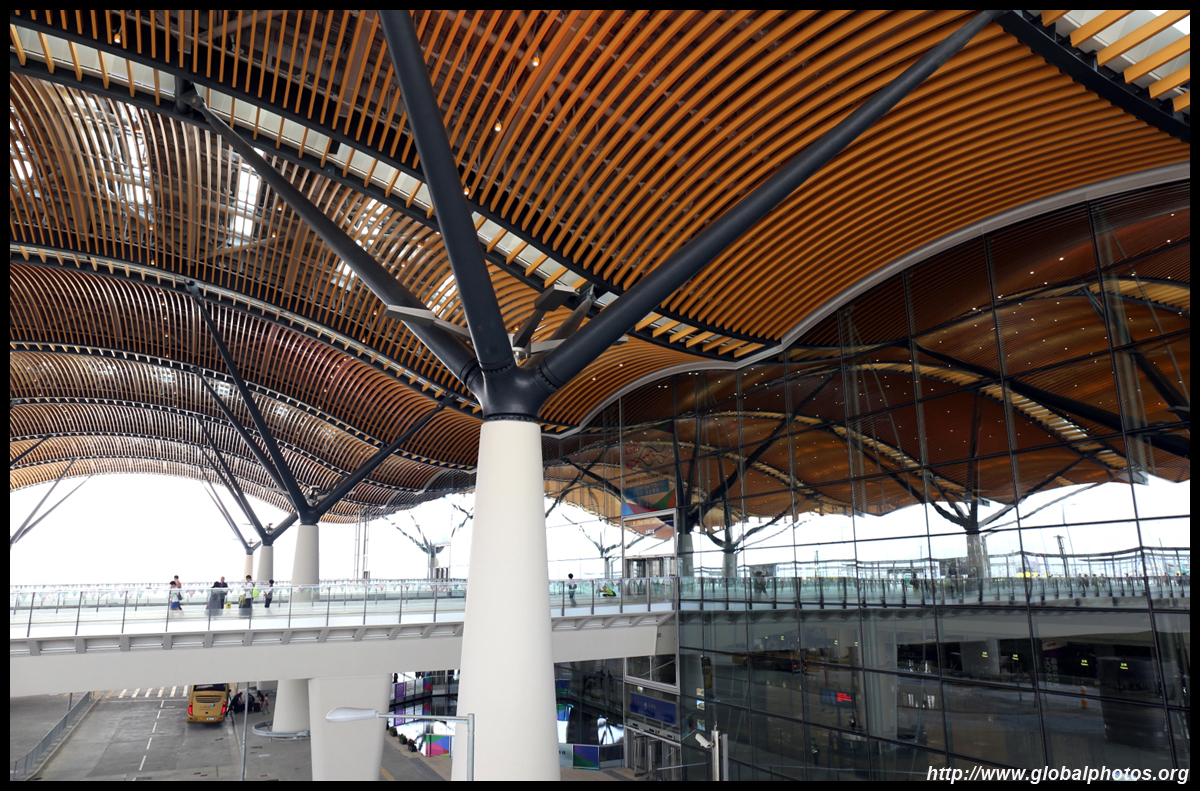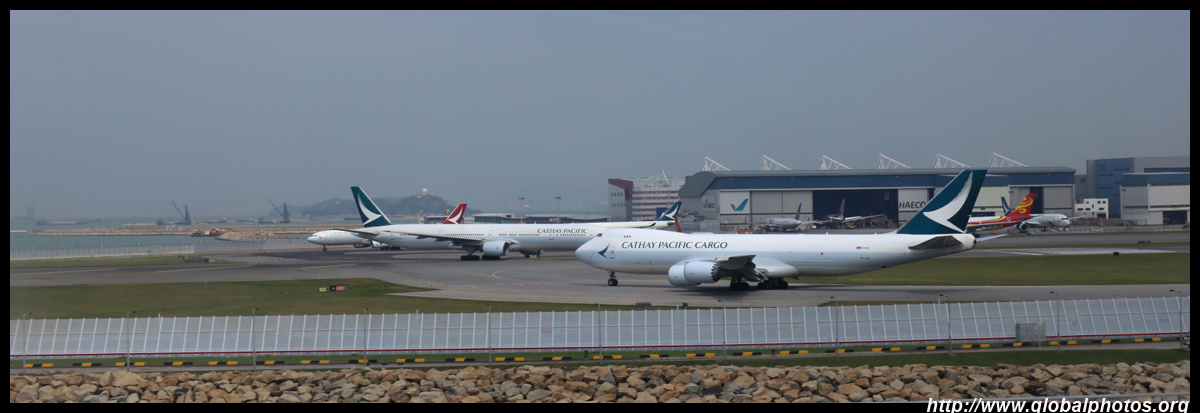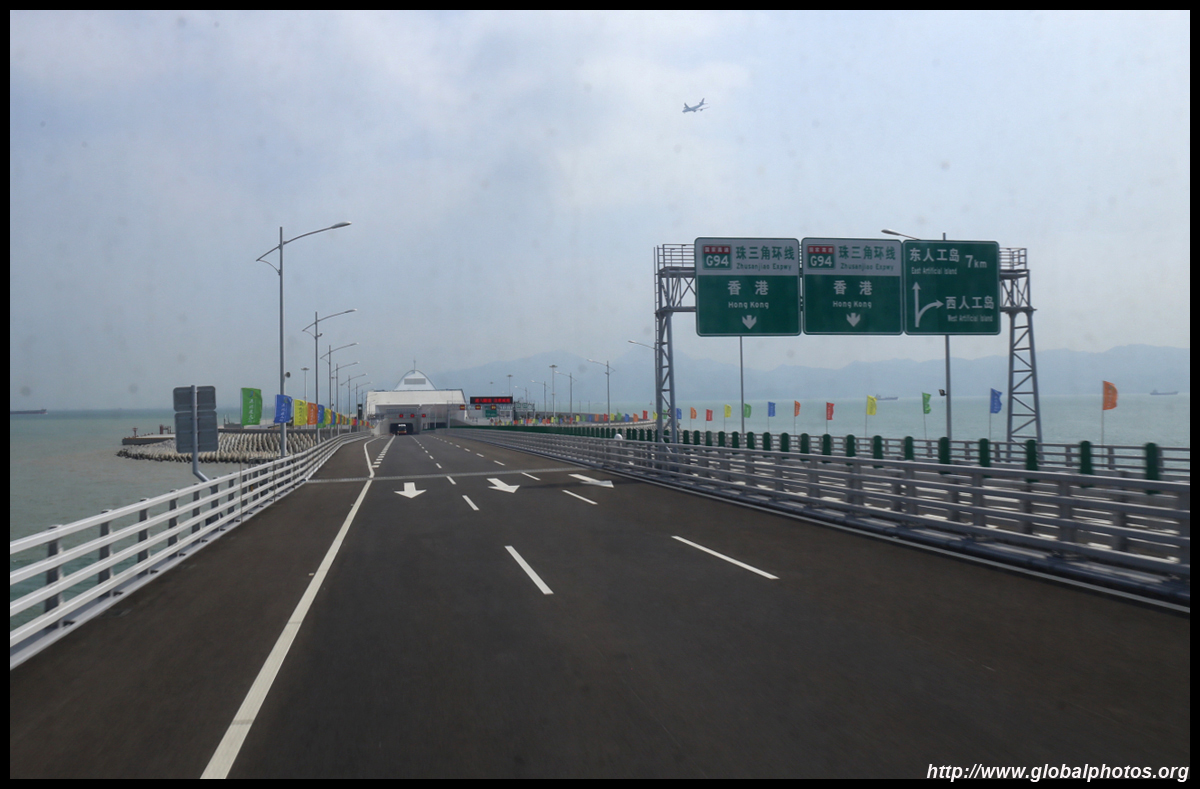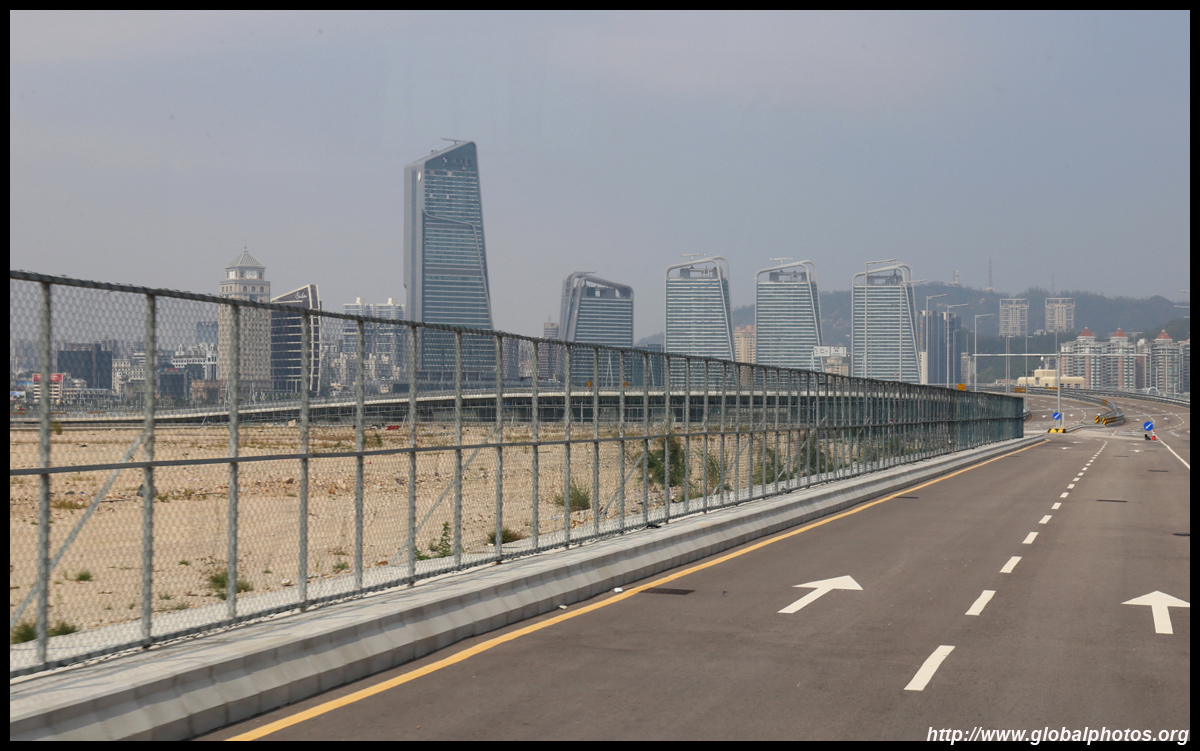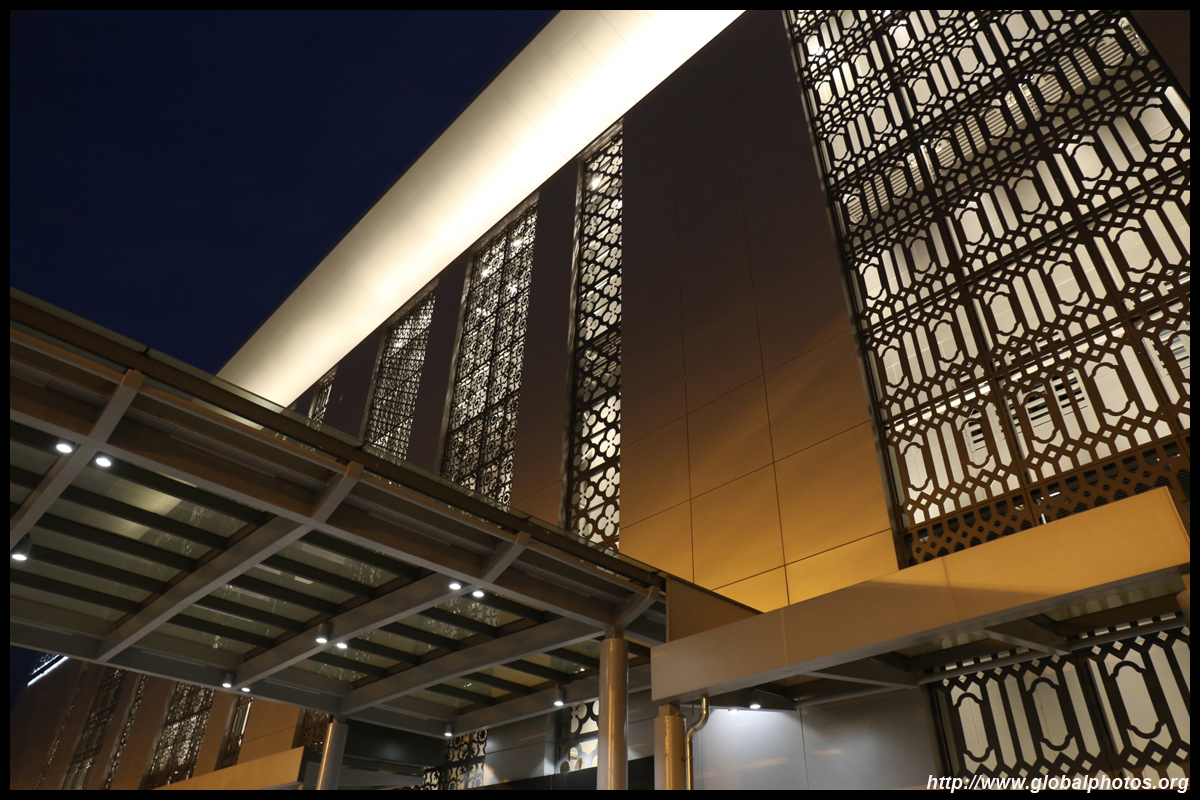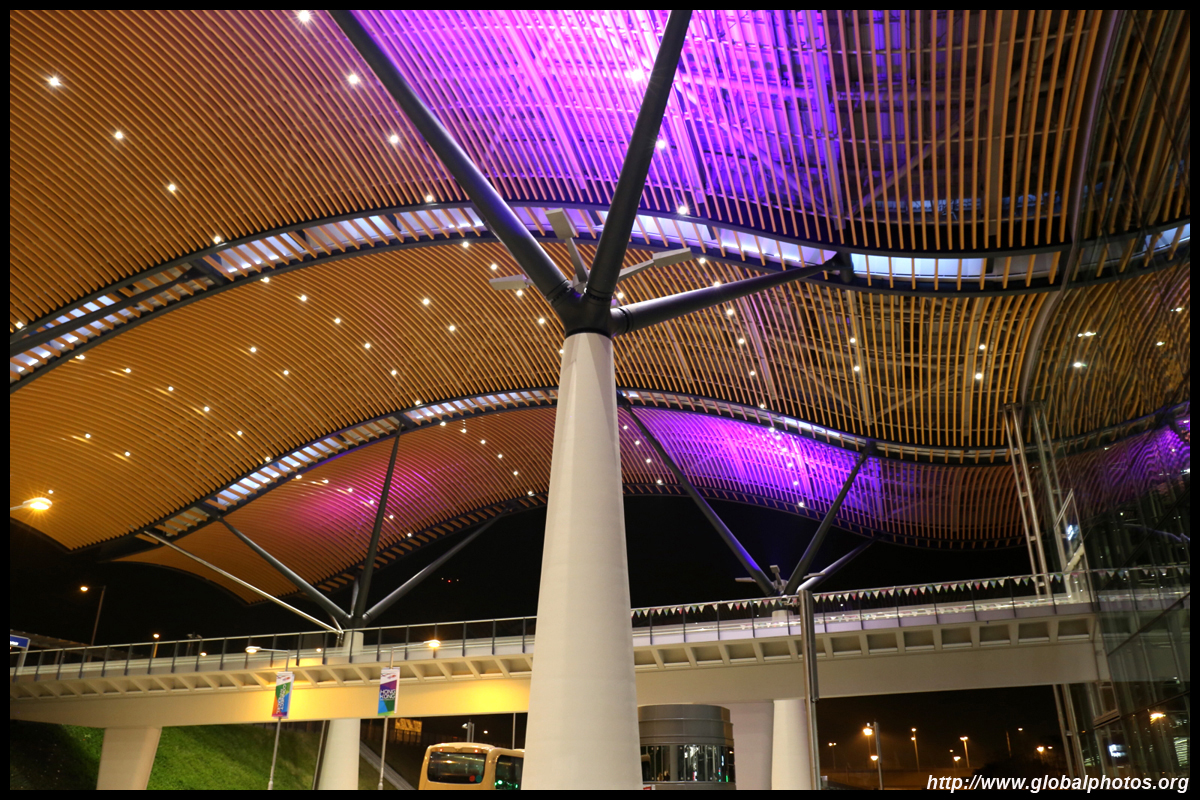Hong Kong - Zhuhai - Macao Bridge Photo Gallery
A Guide from Hong Kong to Macao by Bus

The Hong Kong - Zhuhai - Macao Bridge is the longest bridge and tunnel sea crossing in the world. The idea first surfaced in 1983 from a local businessman. At the time, the bridge was intended to help strengthen Hong Kong port's reach. China's state planner and the Hong Kong government took notice in 2003, studying what transport links are needed in the Pearl River Delta. Construction of the 55km project began in 2009 and it opened on October 24, 2018 with a final price tag of almost USD$7 billion, shared between the Hong Kong, Chinese, and Macau governments.
| ||||||||||||||||||||||||||||||||||||||||||||||||||
City -> Hong Kong PortCitybus Route Extensions : click here Long Win Route Extensions : click here B5 Sunny Bay MTR - Hong Kong Port : route details B6 Tung Chung MTR - Hong Kong Port : route details | ||||||||||||||||||||||||||||||||||||||||||||||||||
At Sunny Bay, look for the yellow Citybuses parked at the further end of the bus station.
Half an hour later, the bus pulls into the immigration building, which has a large canopy to shelter passengers from the elements.
| ||||||||||||||||||||||||||||||||||||||||||||||||||

|

|
|||||||||||||||||||||||||||||||||||||||||||||||||

|
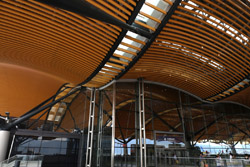
|
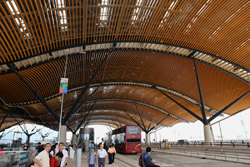
|

|
|||||||||||||||||||||||||||||||||||||||||||||||
The immigration building is spacious and the counters / kiosks are only a short walk away from the entrance. However, food options are quite sparse and there is very little available here for a proper meal.
| ||||||||||||||||||||||||||||||||||||||||||||||||||

|

|

|

|
|||||||||||||||||||||||||||||||||||||||||||||||
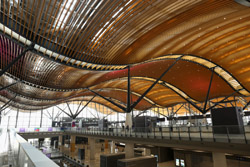
|

|

|

|
|||||||||||||||||||||||||||||||||||||||||||||||

|
||||||||||||||||||||||||||||||||||||||||||||||||||
Bus tickets for Macau or Zhuhai are available after immigration. If buying with Octopus card or Chinese mobile payment apps, there are kiosks that get the job done quickly. However, credit cards are not accepted. A 1-way ticket costs 65 dollars but they don't offer roundtrip tickets.
The bus station is perpendicular to the immigration building with a thin canopy that can barely protect you from the sun, let alone a rainstorm. The left bays are for Zhuhai and the right bays are for Macau. On my visit, there was a huge line for Macau and it was a 20 minute wait to get on a bus. Tickets are not for specific departures so you have to line up and wait patiently.
| ||||||||||||||||||||||||||||||||||||||||||||||||||
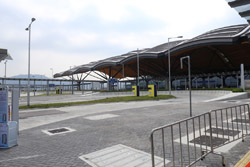
|

|

|

|
|||||||||||||||||||||||||||||||||||||||||||||||

|

|

|
||||||||||||||||||||||||||||||||||||||||||||||||
No standing room is allowed for the 40-minute journey. The first elevated section runs parallel to the airport before entering the wide mouth of the Pearl River. Views on the right side were decent as the cargo area is usually elusive to the public and not so visible from the terminal's windows. | ||||||||||||||||||||||||||||||||||||||||||||||||||

|

|

|
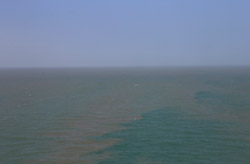
|
|||||||||||||||||||||||||||||||||||||||||||||||

|

|
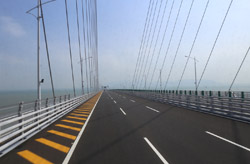
|

|
|||||||||||||||||||||||||||||||||||||||||||||||

|

|

|

|
|||||||||||||||||||||||||||||||||||||||||||||||

|

|

|

|
|||||||||||||||||||||||||||||||||||||||||||||||

|

|

|
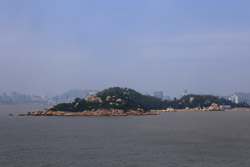
|
|||||||||||||||||||||||||||||||||||||||||||||||

|

|

|

|
|||||||||||||||||||||||||||||||||||||||||||||||

|

|

|
||||||||||||||||||||||||||||||||||||||||||||||||
After the major bridge sections, Zhuhai's buildings start appearing closer behind the islands.
We pulled into a massive reclaimed island and looped around for a bit before reaching the giant Macau immigration building.










If you have mobility issues, stick with the ferries. There are long walks and several escalator rides from the bus drop-off to the immigration checkpoint. The building was eeringly empty and I completed my formalities at the kiosk in seconds. Did they need that big a space when the buses were spaced out?
For Hong Kong residents, entering Macau is quite easy with ID cards that work in their automated kiosks.
Macau Port -> City Route 101X : route details with 8-10 minute headway at best Route 102X : route details with 12-15 minute headway at best | ||||||||||||||||||||||||||||||||||||||||||||||||||
City -> Macau Port | ||||||||||||||||||||||||||||||||||||||||||||||||||

|

|

|
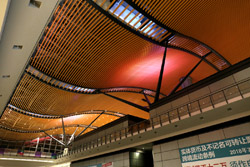
|
|||||||||||||||||||||||||||||||||||||||||||||||

|

|

|

|
|||||||||||||||||||||||||||||||||||||||||||||||

|

|

|

|
|||||||||||||||||||||||||||||||||||||||||||||||
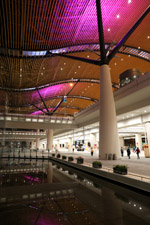
|

|

|
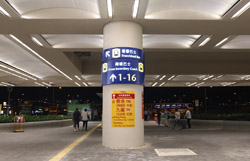
|
|||||||||||||||||||||||||||||||||||||||||||||||





